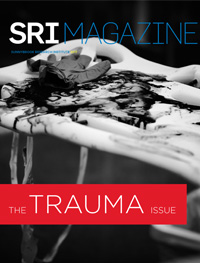Technologies developed in-house approved for clinical use

Medical devices spun out of research done at Sunnybrook Research Institute (SRI) are poised to improve care, with recent approvals by regulatory bodies flashing a bright green light. Dr. Brian Courtney, a clinician-scientist at SRI, developed an intracardiac echocardiography system that makes 3-D pictures inside the heart in real time. It is the first catheter-based ultrasound system that is forward-viewing and can provide 2-D and 3-D images of the heart. Conavi Medical, a spinoff that Courtney co-founded, announced in March 2017 that it received approval from Health Canada to sell its intracardiac imaging system in Canada. The device provides guidance during minimally invasive procedures to treat structural heart disease and arrhythmia, when the heart beats irregularly.
Dr. Stuart Foster, a senior scientist at SRI, founded VisualSonics in 1999 based on his work in micro-ultrasound for preclinical imaging. This is imaging that is done at high frequencies to produce clear pictures of minute structures within tissue, and physiological details, like blood flow in a tumour, for example. The company, which was acquired by Fujifilm, also received Health Canada approval in January 2017 for its ultra-high-frequency ultrasound system. It is the first technology of its kind to be used in people. Applications include imaging very small blood vessels in newborns, studying early joint changes in rheumatoid arthritis and examining skin changes in dermatology.
The regulatory body also authorized focused ultrasound for treatment of essential tremor, a progressive and debilitating disorder that causes shaking, and afflicts millions worldwide. Focused ultrasound, which is completely noninvasive, uses MRI to guide high-intensity sound waves deep in the brain to destroy disease-causing tissue and to monitor the effects of the treatment as it is delivered.
The approval brought things full circle for Dr. Kullervo Hynynen, director of Physical Sciences at SRI, who worked on the technology for 20 years. Health Canada’s decision was based on results of a multicentre, randomized controlled trial published in the New England Journal of Medicine. The study’s lead authors, including SRI scientist Dr. Nir Lipsman, showed that MRI-guided focused ultrasound safely and effectively improved symptoms and quality of life of patients with essential tremor who were resistant to medication.
Read text-only version of above infographic
- $6.7 billion: The value (USD) of the medical device market in 2014.
- 10 percent: Percentage of medical device companies that have spun off from Canadian research organizations.
- Canada's largest trading partner is the U.S. In 2015, medical device exports to the U.S. totalled $1.8 billion.
- $6.3 billion: The amount more that Canada spent on medical device imports versus exports in 2015.
- The industry is based primarily in British Columbia, Ontario and Quebec.




